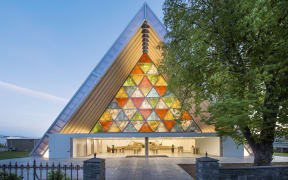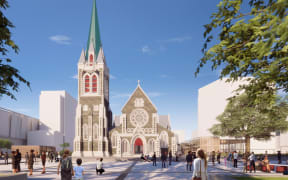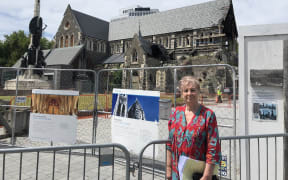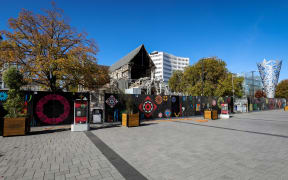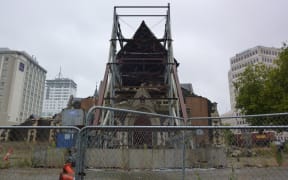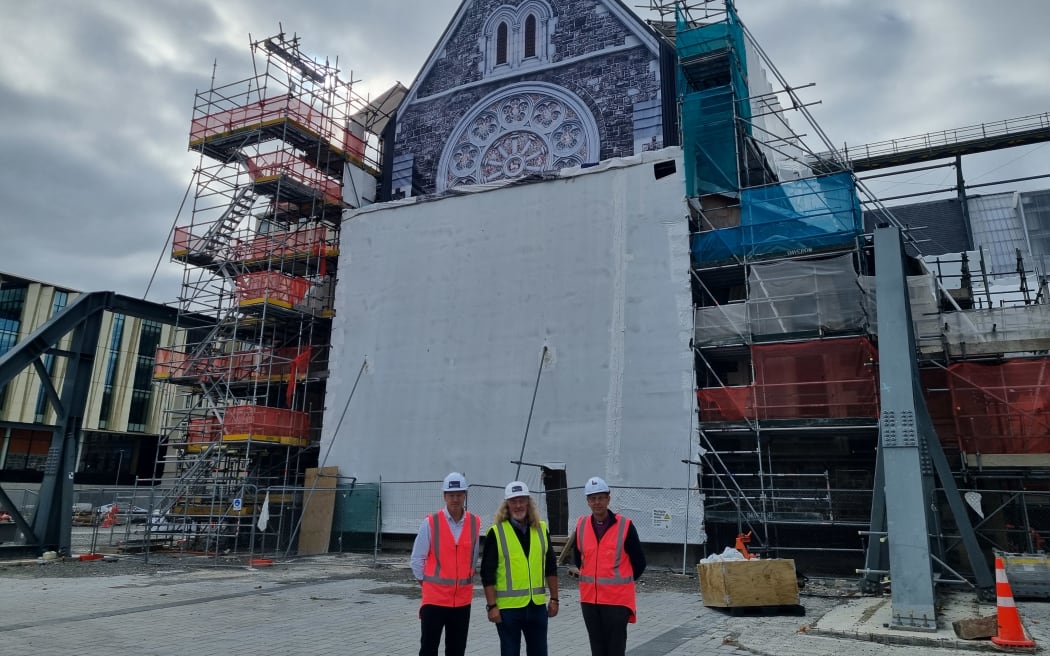
Keith Paterson, Mark Stewart and Bishop Peter Carrell in front of the quake-damaged Christ Church Cathedral. Photo: Niva Chittock / RNZ
The Christ Church Cathedral Reinstatement Trust says it deliberately began reducing staff numbers and slowing work on site last year to help keep costs down.
The trust on Saturday announced its budget estimate had ballooned from $104 million to $248m, following a four-month project review.
It needed to secure $30m by August, when a meeting would be held on whether to mothball the project, trust chair Mark Stewart said.
"We realised that costs were starting to get quite expensive. There were changes ... in ... our estimations ... and the bills that were flowing through from that [in 2023]," he said.
"We felt that the best thing we could do from that was to deliberately slow the work on the cathedral, which we did from last December."
The restoration completion date is estimated to be 2031.
Restoration project director Keith Paterson said the number of contractors on site fluctuated, depending on the job at hand.
"At full noise last year, we had 130 people on site. That was when we were rapidly deconstructing, opening up and commencing strengthening to test some of our methods," he said.
"There [were] a lot of masons, a lot of labour in that effort. Right now, we're down to about 50."
Surprises during last year's assessments were partly to blame for the cost blowout. Some assumptions were proved wrong when construction teams were finally able to get inside and properly test in, around and under the building, Stewart said.
"There are a few issues. The foundations were not as deep as they were believed to have been, some of the ground conditions, particularly where the tower is being constructed, are more challenging than first thought.
"The walls are actually a little stronger than what we first estimated them to be, therefore it takes longer to strengthen them and reconstruct them. These all add up."
"When we tested the area under the tower, there was an anomaly in the geology, which means there is abundant water supply there, which means that constructing a deep foundation in that area is very difficult and expensive," Paterson said.
"This was not known [previously] and it's not consistent across the site. If we had known that information at the time we did the design, we probably wouldn't have designed it that way."
They had now finished comprehensive investigations across the whole site and had "all the pieces of the puzzle", Paterson said.
High-risk areas of the build had been cut out of the plans to prevent the budget from ballooning further.
"That lowered courtyard that was on the north side was a wonderful architectural offering to the city but it turns out that it's just too complex and expensive to build - and time-consuming.
"That's the other issue - when it's complex, it introduces risk and adds time to the project, leading to [further] cost," Paterson said.
The trust's board had also removed the tower's deep foundation from the plans.
It had alternative plans that still worked well and did not compromise any of the cathedral quarter's functionality, he said.
The current total shortfall of the project sits at $114m.
